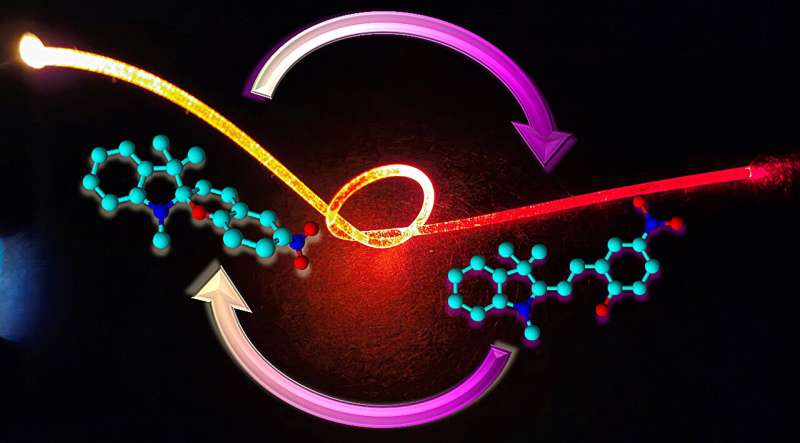This article has been reviewed according to Science X's editorial process and policies. Editors have highlighted the following attributes while ensuring the content's credibility:
fact-checked
proofread
Sensing ultraviolet light with the help of molecular switches

The old saying "the dose makes the poison" also holds true for ultraviolet (UV) light. While UV light is essential for vitamin D production, it is also important in phototherapy, several industrial processes, and plant growth. It also has harmful effects such as premature skin aging and cancer.
The beneficial or harmful effects of UV light depend, among other variables, on the delivered UV dose. With the rise of point-of-care technology and the Internet of Things, there's a growing demand for real-time monitoring of environmental variables that impact our health. However, the existing UV optical sensing technologies rely on materials with limited flexibility, or on costly and fragile (scientific grade) apparatus.
To bridge this gap, researchers led by Prof. Bora Ung at École de Technologie Supérieure (ÉTS), Canada, fabricated a new rubber-like optical fiber for UV detection. The work titled "Novel elastomeric spiropyran-doped poly(dimethylsiloxane) optical waveguide for UV sensing," was published in Frontiers of Optoelectronics.
To do this, the researchers used poly(dimethylsiloxane) (PDMS)—a highly flexible, stretchable and biocompatible plastic—doped with an organic dye that acts as a molecular switch to render PDMS responsive to UV light.
The molecular structure of the organic dye, named spiropyran, undergoes a reversible transformation triggered by UV irradiation which results in changes in the optical properties of the PDMS compound. These changes can be measured using commonly available LED/laser sources and photodiodes.
Once the UV exposure stops, the material recovers its initial properties, much like a switch, and can be reused many times. The researchers expect its integrability to smart textiles and wearable devices for continuous UV dose monitoring, leveraging the advantages of optical sensors, such as immunity to electromagnetic interference and corrosion.
The findings are an important step toward research in elastomeric optics, smart optical materials, and polymer optical waveguide sensors.
More information: Camila Aparecida Zimmermann et al, Novel elastomeric spiropyran-doped poly(dimethylsiloxane) optical waveguide for UV sensing, Frontiers of Optoelectronics (2024). DOI: 10.1007/s12200-024-00124-4
Provided by Frontiers Journals





















